Orange Pi 3B (RK3566) development board unboxing evaluation and system burning tutorial
Introduction
The Orange Pi 3B is a single-board computer the size of a Raspberry Pi, but has more complete interfaces, including a full-size HDMI interface and an M.2 storage slot. The price starts at 199.
Orange Pi 3B uses Rockchip RK3566 quad-core 64-bit Cortex-A55 processor, using 22nm process, with a main frequency of up to 1.8GHz, integrated ARM Mali-G52 GPU, embedded high-performance 2D image acceleration module, built-in 0.8 Tops computing power AI accelerator NPU, optional 2GB, 4GB or 8GB memory, with up to 4K display processing capabilities.
Orange Pi 3B supports Android11, Ubuntu22.04, Ubuntu20.04, Debian11, Debian12, open source Hongmeng 4.0 Beta1, Orange Pi OS (Arch), Orange Pi OS (OH) based on open source Hongmeng and other operating systems.
Orange Pi 3B introduces quite a wealth of interfaces, including HDMI output, M.2 PCIe2.0x1, Gigabit Ethernet port, USB2.0, USB3.0 interface and 40pin expansion pin header. It can be widely used in high-end tablets, edge computing, artificial intelligence, cloud computing, AR/VR, smart security, smart home and other fields, covering various AIoT industries.
Orange Pi 3B official website introduction address: https://url.zeruns.tech/FAutz
Orange Pi 3B schematic download address: https://url.zeruns.tech/cVOHT extraction code: qrw6
Orange Pi 3B user manual download address: https://url.zeruns.tech/0Bg71 extraction code: t93d
RK3566 data sheet download address: https://url.zeruns.tech/7zXjD
Rock Pi 4C flashing Armbian system tutorial (EMMC module): https://blog.zeruns.tech/archives/631.html
Unboxing
front of box

back of box

The contents of the box include an Orange Pi 3B development board in an anti-static bag, and a piece of paper with a title translated into Chinese as "Regulatory Compliance and Safety Information."

On the front of the development board, there are LCD and CAM (MIPI CSI camera) interfaces, a 5V fan interface that can control the speed with PWM, an RTC battery interface, and a 40Pin IO port. The black thing coming out of it is the WiFi and Bluetooth antenna. The button next to the Type-C interface is the power button, the BOOT button above is used to enter MaskRom mode, and the RESET button on the right is the forced restart button.
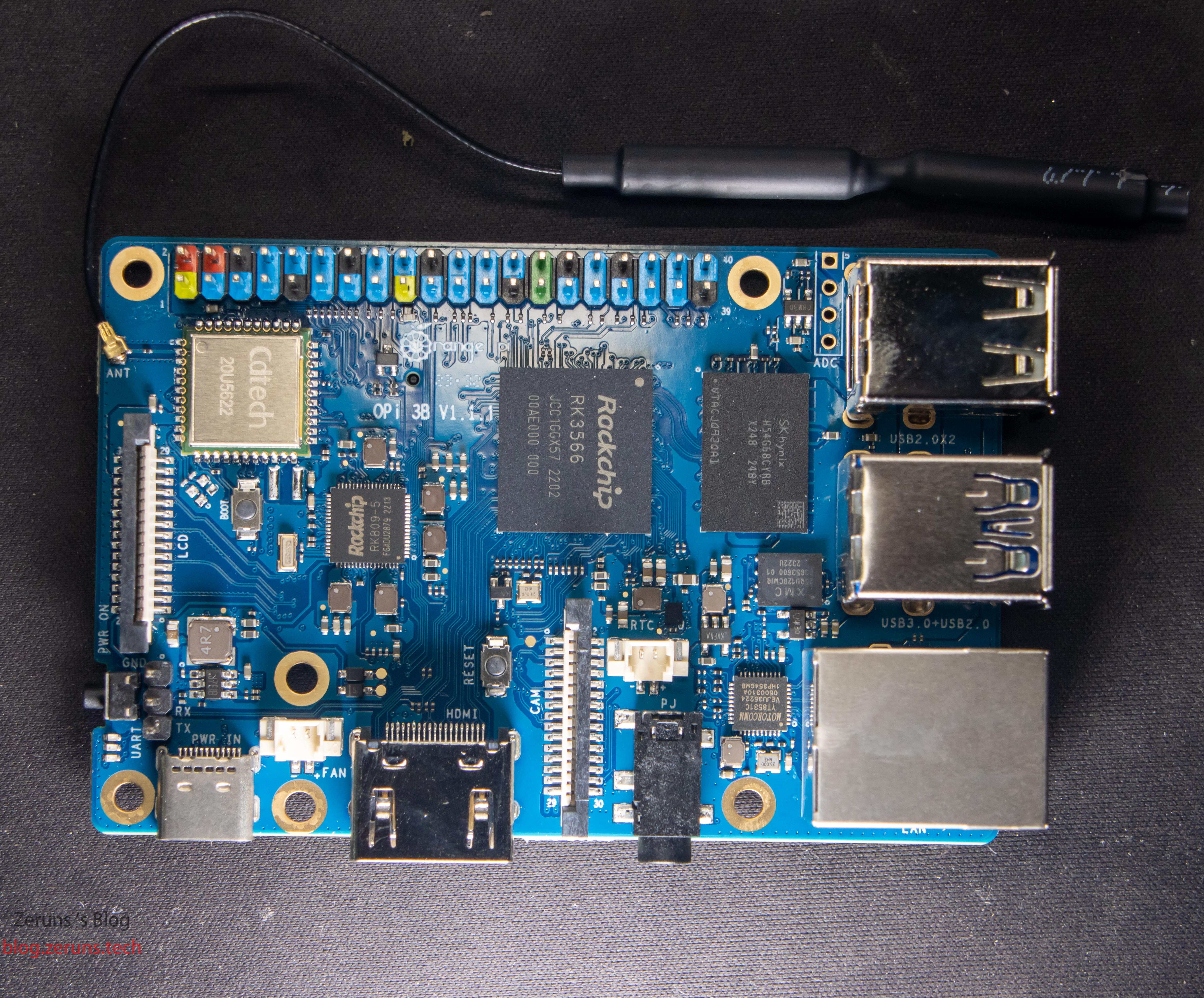
On the back of the development board, there are EDP interface, EMMC interface, M.2 interface (SATA3 and PCIE 2.0*1), TF card interface, and a post that should read the production date: 2023.08.19.

On the side of the development board, there are Gigabit network ports, 1 USB3.0 and 3 USB2.0 interfaces.

From left to right are the Type-C power interface, HDMI 2.0 interface, and 3.5mm headphone interface.

Hardware parameters
| Master chip | Rockchip RK3566 |
|---|---|
| CPU | Quad-core 64-bit Cortex-A55 processor, 22nm advanced process, main frequency up to 1.8GHz |
| GPU | • ARM Mali G52 2EE graphics processor • Supports OpenGL ES 1.1/2.0/3.2, OpenCL 2.0, Vulkan 1.1 • Embedded high-performance 2D acceleration hardware |
| NPU | • Integrated RKNN NPU AI accelerator, 0.8Tops@INT8 performance • Supports one-click conversion of Caffe/TensorFlow/TFLite/ONNX/PyTorch/Keras/Darknet architecture models |
| VPU | • 4K@60fps H.265/H.264/VP9 video decoding • 1080P@100fps H.265 video encoding • 1080P@60fps H.264 video encoding |
| PMU | Rockchip RK809-5 |
| Memory | 2GB/4GB/8GB (LPDDR4/4x) |
| storage | • Support eMMC module: 16GB/32GB/64GB/128GB/256GB • SPI Flash: 16MB/32MB • M.2 M-KEY slot (optional): SATA3 or PCIe2.0 NVME SSD • TF card slot |
| Wi-Fi+Bluetooth | Wi-Fi 5+BT 5.0,BLE(20U5622) |
| Ethernet transceiver | 10/100/1000Mbps Ethernet (onboard PHY chip: YT8531C) |
| show | • 1xHDMI TX 2.0, maximum support 4K@60FPS • 1xMIPI DSI 2 Lane • eDP1.3 |
| Camera | 1xMIPI CSI 2 Lane camera interface |
| USB | • 1xUSB 2.0 supports Device or HOST mode • 1xUSB 3.0 HOST • 2xUSB 2.0 HOST |
| Audio | 3.5mm headphone jack audio input/output |
| button | 1xMaskROM key, 1xRESET key, 1xPOWER key |
| FAN | 2Pin 1.25mm specification 5V fan interface |
| RTC | 2Pin 1.25mm spare battery interface |
| 40Pin | 40Pin function expansion interface, supporting the following interface types: GPIO, UART, I2C, SPI, PWM |
| power supply | Type-C 5V3A |
| Supported operating systems | Android11, Ubuntu22.04, Ubuntu20.04, Debian11, Debian12, open source Hongmeng 4.0 Beta1, Orange Pi OS (Arch), Orange Pi OS (OH) based on open source Hongmeng and other operating systems. |
| PCB size | 85mm x 56mm x 17mm |
|---|---|
| weight | 49g |
The following is a detailed diagram of each chip and interface on the development board:
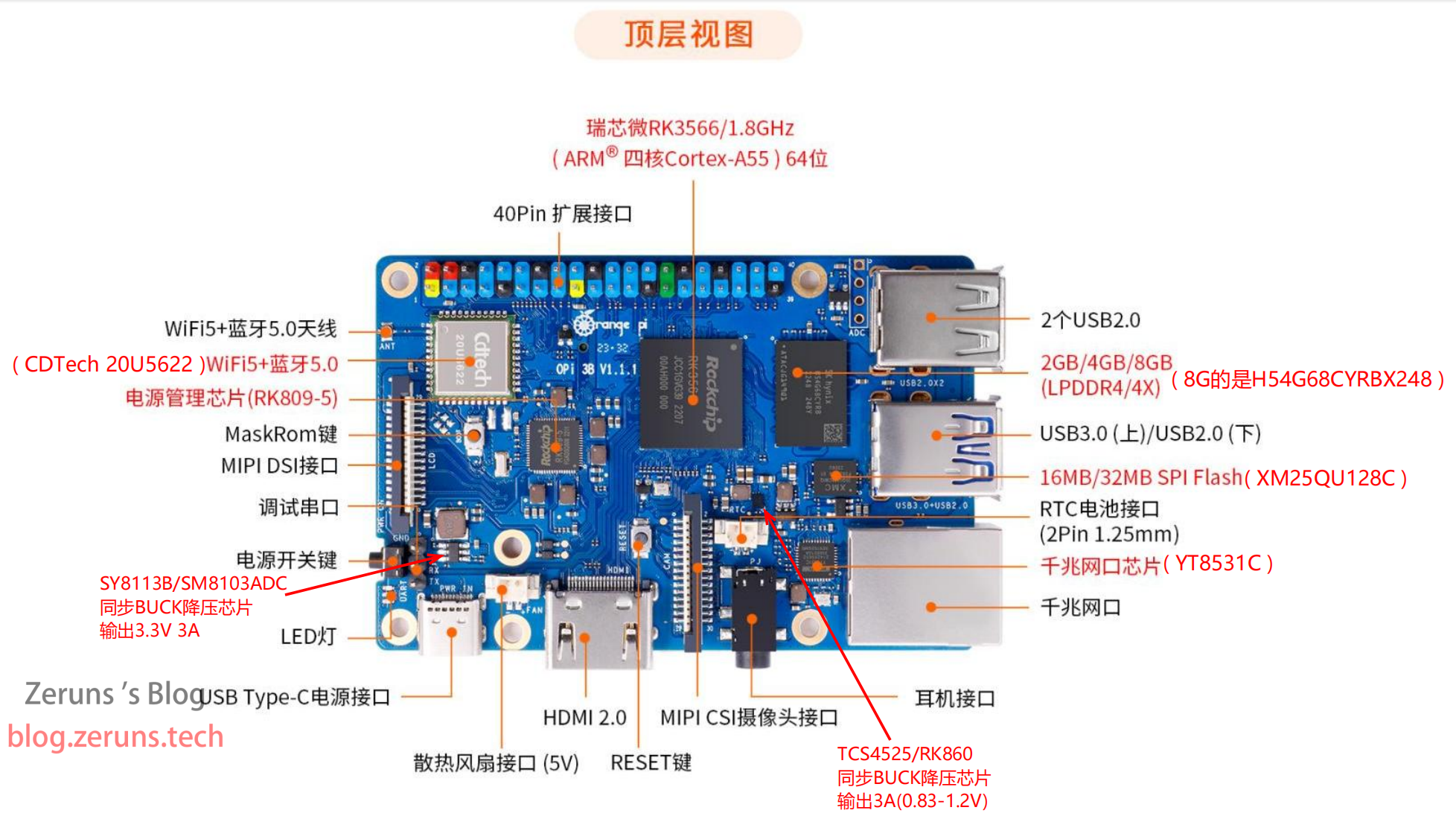
It seems that most of the chips on this development board are made in China.
The Gigabit Ethernet chip is Yutai Micro's YT8531C, which is compatible with Realtek's RTL8211E.
The SPI Flash chip is Wuhan Xinxin's XM25QU128C, with a capacity of 128Mbit (16MByte). Official website introduction: https://url.zeruns.tech/Wxphz
The main control chip is Rockchip's RK3566.
The memory chip is Hynix's 8GB LPDDR4X, model: H54G68CYRBX248.
The WiFi and Bluetooth two-in-one module is CDTech's CDW-20U5622, which supports WIFI5 and BT5.0, supports MIMO, and has a maximum WiFi bandwidth of 80Mhz. Download the data sheet: https://url.zeruns.tech/7bm7j
The power management chip is RK809-5.
The DCDC power supply chip that steps down the 5V input to 3.3V is SY8113B/SM8103ADC.

Orange Pi 3B GPIO port pin definition:
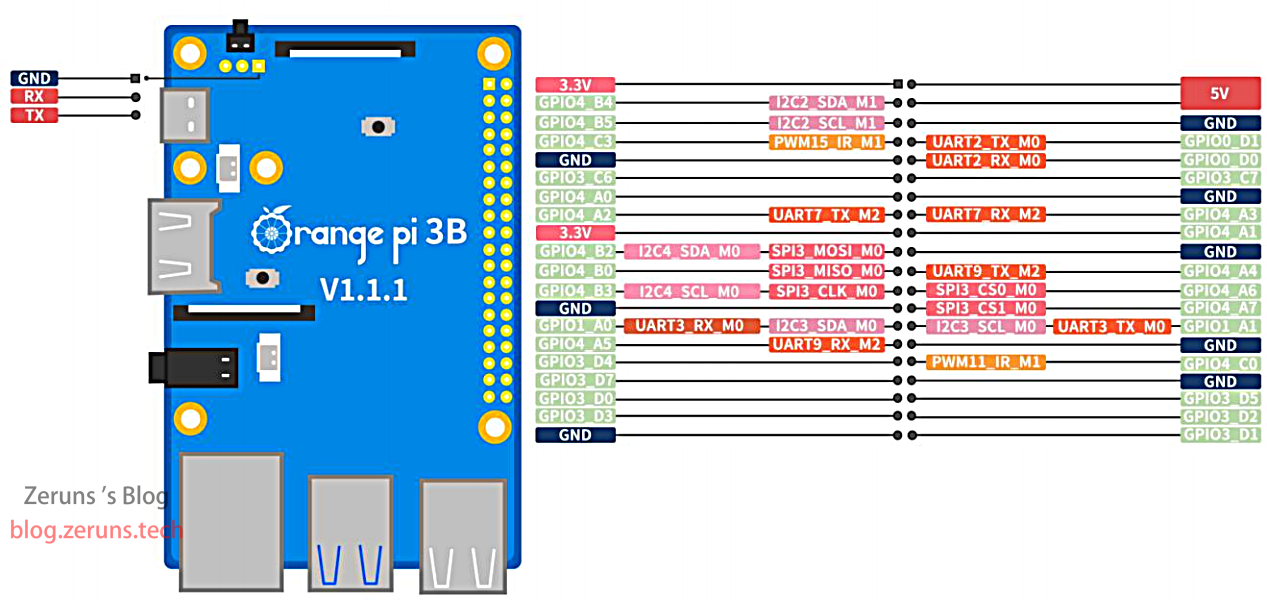
The official requirement is a 5V3A power supply. I measured the actual maximum power consumption of the development board (CPU running full, GPU unloaded) at about 4.1 watts, and the current is about 0.83A. After entering the system, the CPU unloaded is about 1.6 watts. This test was done without connecting It is measured with any USB device. If you want to connect other USB devices, you will definitely need a larger power supply.
The maximum SOC temperature does not exceed 65 degrees (at room temperature of 30 degrees), so there is no need to add a heat sink.
Selling price and purchase address
The official price of Orange Pi 3B is as follows (I bought the 8GB version from the official Taobao store for 299):

The maker price is limited to individual buyers, and invoices can only be made in the buyer's personal name. If a company purchases, and requires invoices in the name of the company, the purchase will be based on the official selling price (original price).
- Orange Pi 3B JD.com: https://u.jd.com/niAEAzI
- Orange Pi 3B Taobao: https://s.click.taobao.com/LZdikAu
- Double male USB cable (for burning system): https://u.jd.com/niANEeD
- M.2 SSD 2230: https://u.jd.com/nzAl1Kd
- Samsung TF card 128G: https://u.jd.com/n8ATRX7
- Power supply (5V 3A): https://u.jd.com/nqAJNrS
- HDMI cable: https://u.jd.com/nQARvKr
- USB3.0 video capture card: https://s.click.taobao.com/1tXhkAu
System image burning
There are many ways to burn the system image of Orange Pi 3B:
- Use software such as balenaEtcher to directly burn the system image into the TF card through the card reader.
- Use RKDevTool software to connect the development board through the dual male USB cable to enter the MaskROM mode, and directly burn the system image to the TF card/M.2 solid state drive/eMMC.
- Use software such as balenaEtcher to directly burn the system image to the TF card through a card reader, and then use the dd command to copy the system to an eMMC or M.2 solid-state drive after entering the system .
You can only use method 2 to burn the Android system. Please refer to the Orange Pi 3B user manual for details. There are various methods of burning the system in the manual. The manual download address is above.
Below I will briefly talk about the specific steps of burning the Linux image to the TF card using method 1. I also refer to the user manual .
- First prepare a TF card with a capacity of 16GB or larger. The transmission speed of the TF card must be class 10 or above. It is recommended to use TF cards from brands such as Samsung or SanDisk.
- Then use the card reader to insert the TF card into the computer
- Download the compressed package of the Linux operating system image file you want to burn from the Orange Pi official website , and then use decompression software to decompress it. In the decompressed file, the file ending with ".img " is the image file of the operating system, and the size is generally 2GB. above.
System image official website download address: https://url.zeruns.tech/0n9M4
Orange Pi OS (Arch) Baidu network disk download address: https://url.zeruns.tech/1Jeq7 Extraction code: rc6c
- Then download the Linux image burning software - balenaEtcher , the download address is: https://url.zeruns.tech/hC0rU
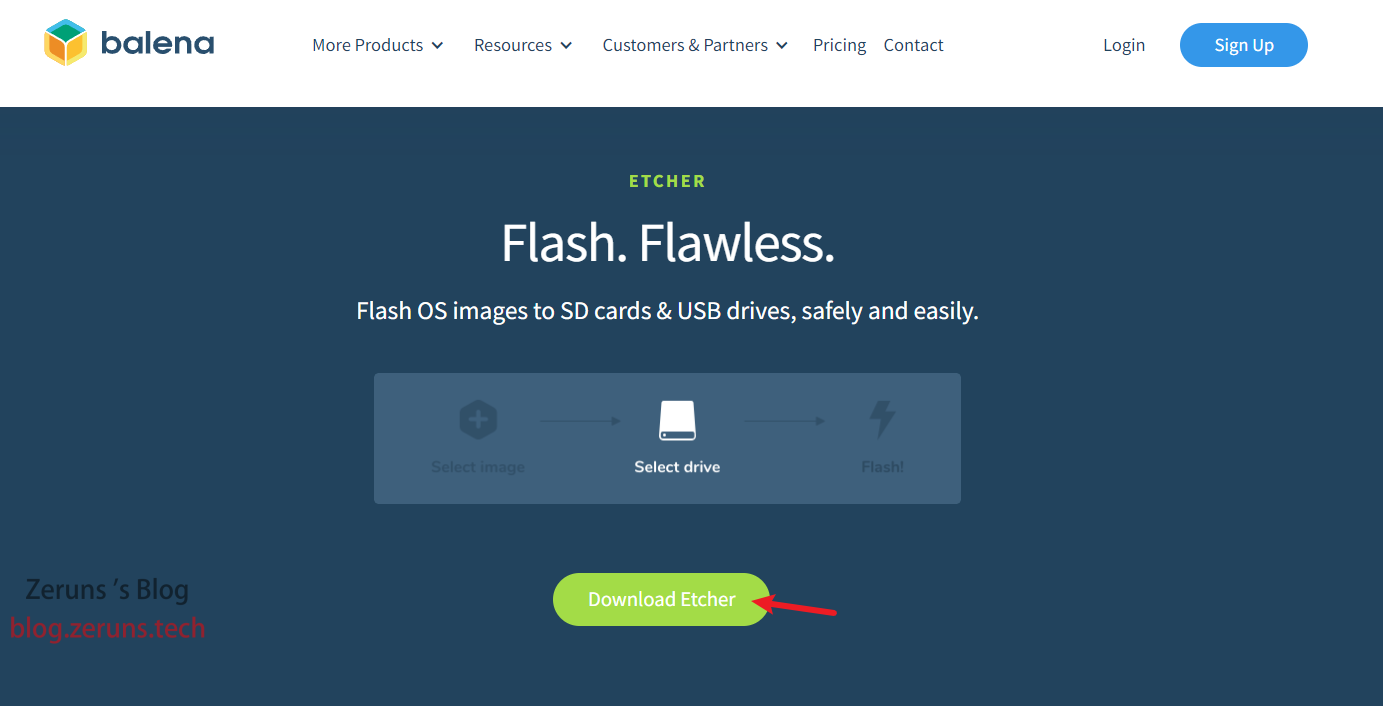
- Then you can choose to download the Portable version of the software balenaEtcher. The Portable version does not require installation and can be used by double-clicking it to open it.
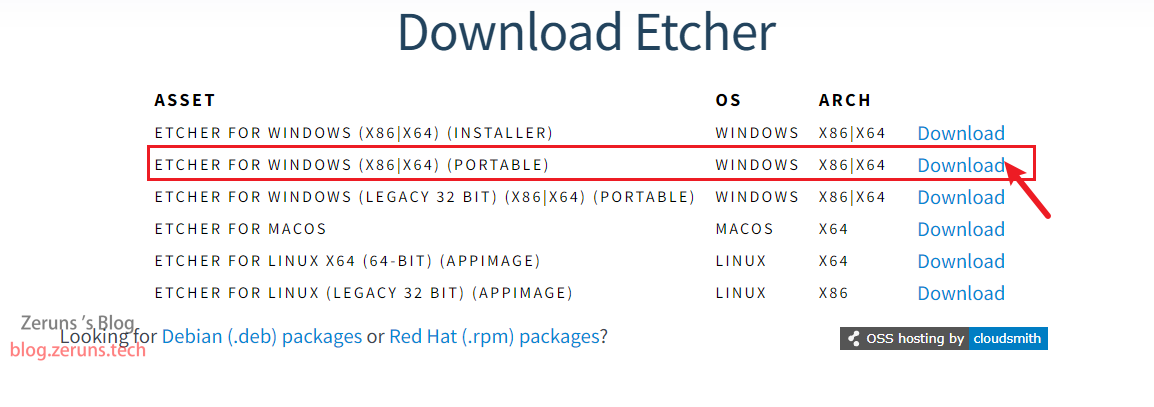
- If you downloaded the version of balenaEtcher that needs to be installed, please install it first before using it. If you downloaded the Portable version of balenaEtcher, just double-click to open it. The balenaEtcher interface after opening is as shown below:


- The specific steps to use balenaEtcher to burn a Linux image are as follows:
a. First select the path of the Linux image file to be burned.
b. Then select the drive letter of the TF card
c. Finally click Flash and it will start burning the Linux image to the TF card.

- The interface displayed during the process of burning the Linux image by balenaEtcher is as shown in the figure below. In addition, the progress bar displays orange to indicate that the Linux image is being burned into the TF card.
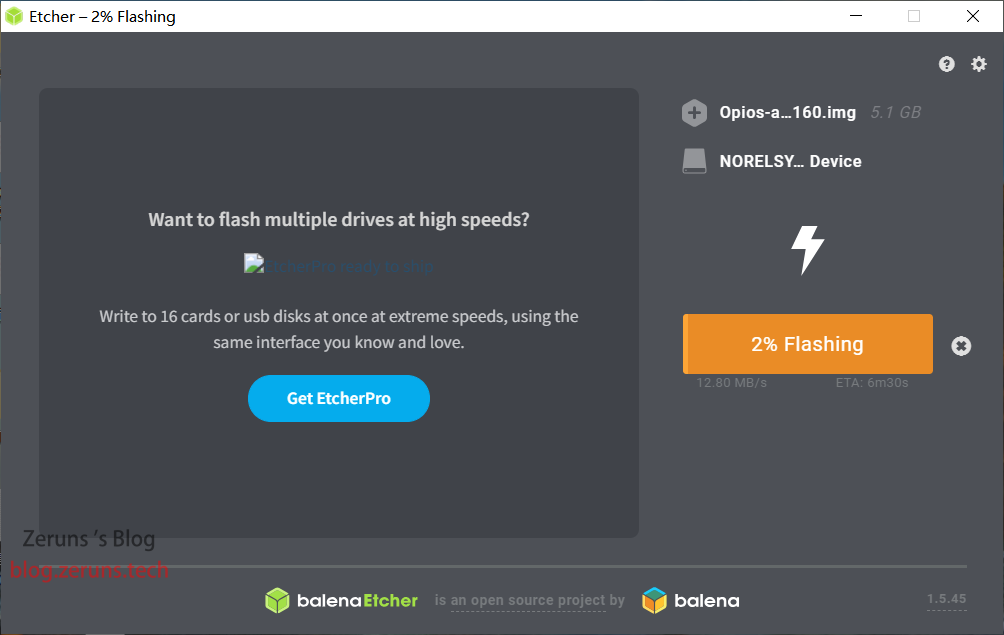
- After the Linux image is burned, balenaEtcher will also verify the image burned into the TF card by default to ensure that there are no problems during the burning process. As shown in the figure below, a blue progress bar indicates that the image has been burned, and balenaEtcher is verifying the burned image.
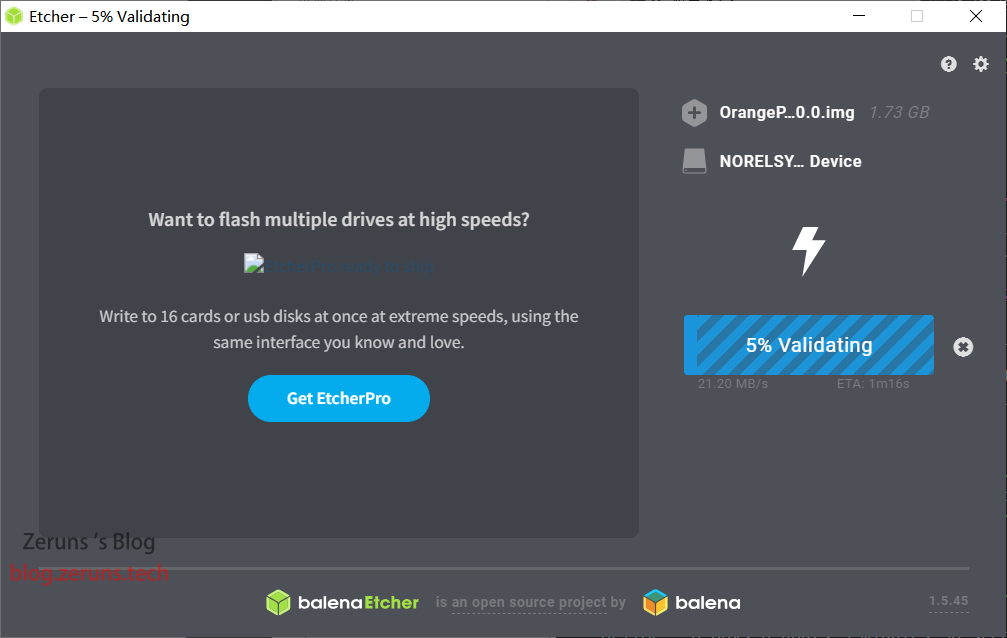
- After successful burning, the display interface of balenaEtcher is as shown in the figure below. If a green indicator icon is displayed, it means that the image burning is successful. At this time, you can exit balenaEtcher, then pull out the TF card and insert it into the TF card slot of the development board for use.

12) Insert the TF card into the development board, connect the screen and power supply, and it will start automatically.

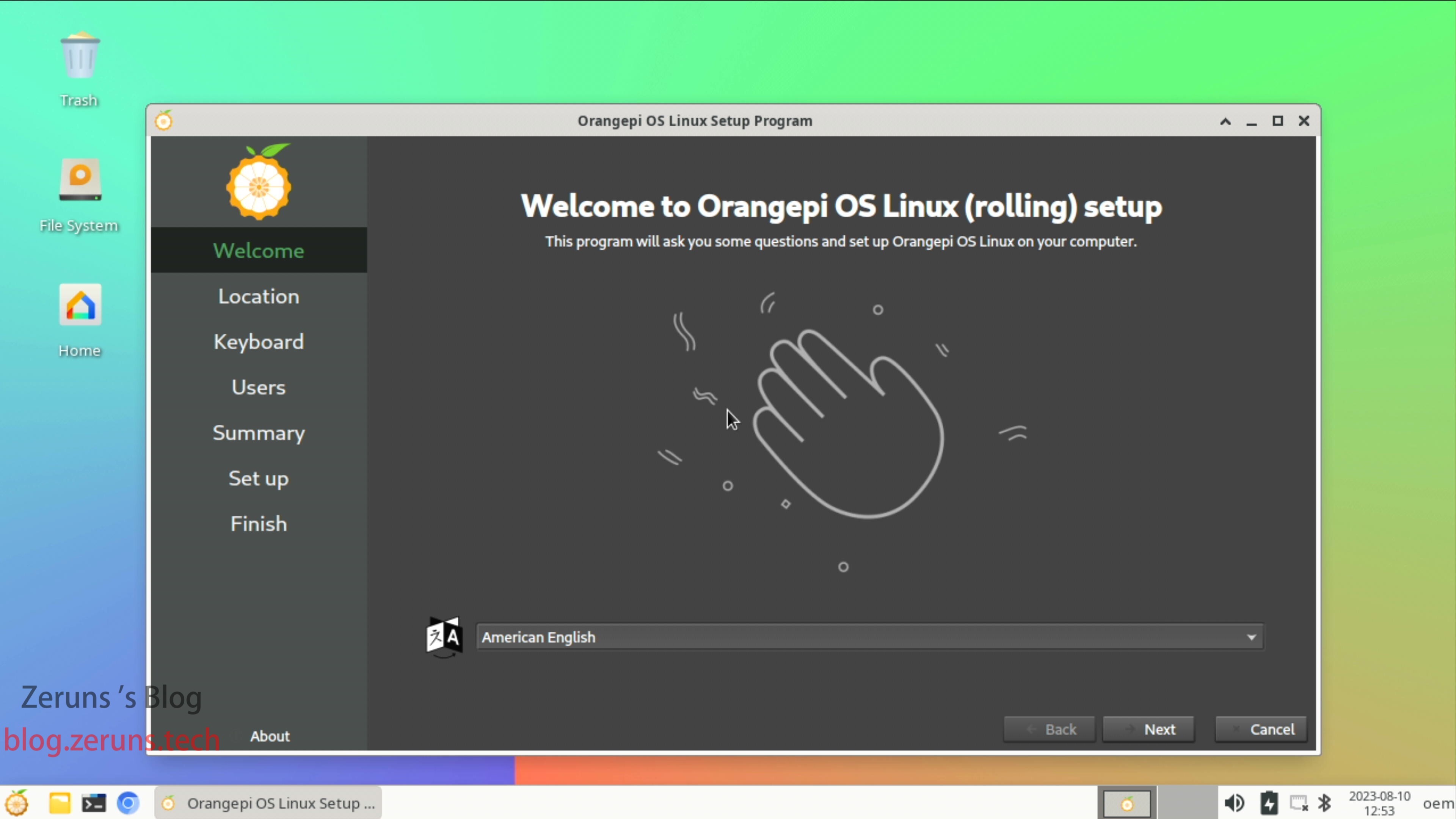
The default account password of Orange Pi's Linux system is:
| account | password |
|---|---|
| root | orangepi |
| orangepi | orangepi |
Performance Testing
The following tests are all under Linux. I also tested Raspberry Pi 4B and Rock Pi 4C for comparison.
Raspberry Pi 4B is the 4G version, the CPU is BCM2711, 4-core A72, clocked at 1.5GHz.
Rock Pi 4C is also a 4G version, the CPU is RK3399, 2-core A72 (1.8GHz) + 4-core A53 (1.4GHz).
The scripts for testing are all here: https://blog.zeruns.tech/archives/533.html
The following test only tests CPU and memory performance. Others such as GPU and NPU are not tested, as well as video encoding and decoding performance.
unixbench
The main test items of Unixbench include: system calls, reading and writing, processes, graphical tests, 2D, 3D, pipelines, operations, C libraries and other system benchmark performance to provide test data. The latest version is used here UnixBench5.1.3.
| Orange Pi 3B | Raspberry Pi 4B | Rock Pi 4C | |
|---|---|---|---|
| single core | 270.8 | 251.8 | 477.6 |
| multi-core | 894.1 | 753.2 | 1896.0 |
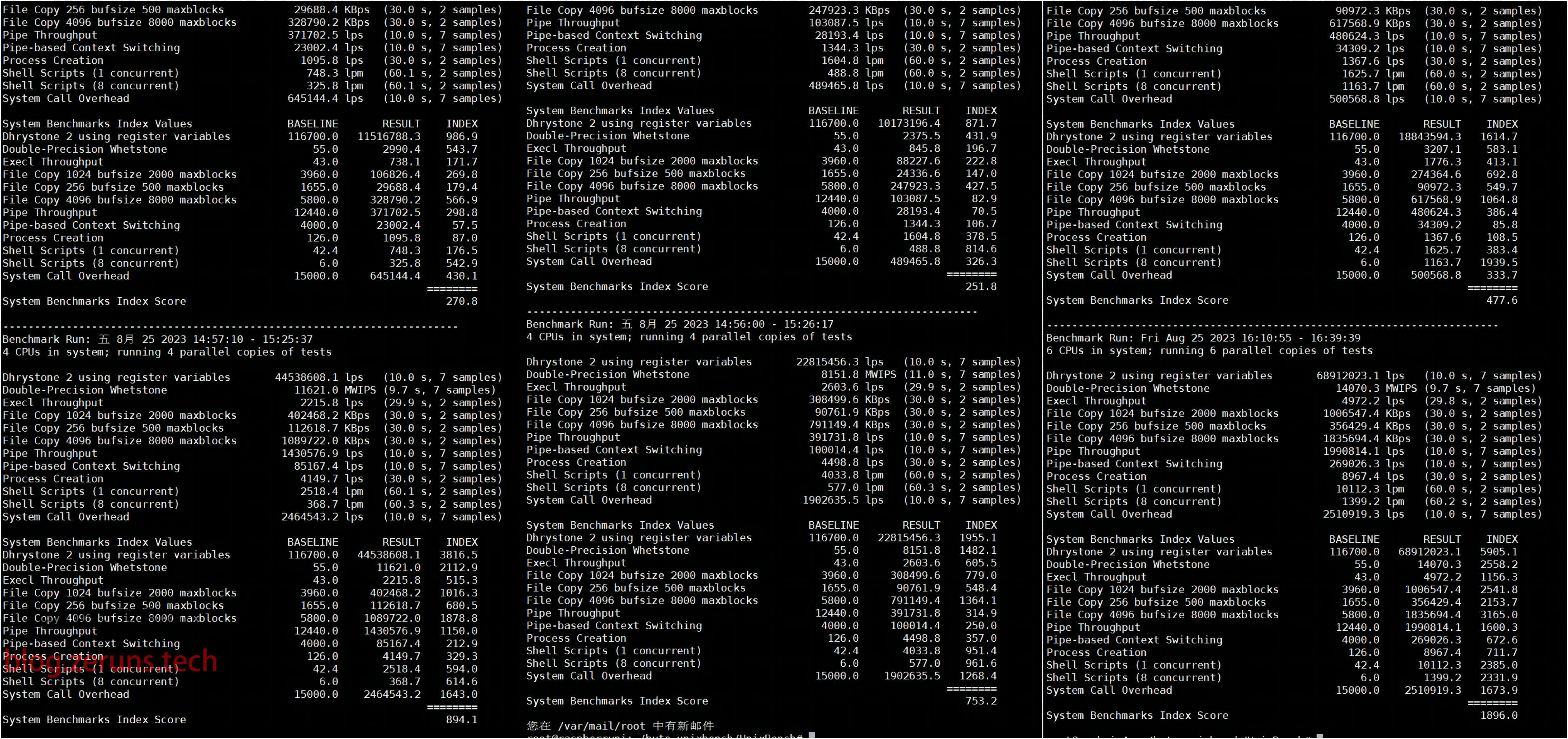
memory speed
Orange Pi 3B:

Recommended reading
- Recommended cost-effective and cheap VPS/cloud servers: https://blog.vpszj.cn/archives/41.html
- Minecraft server building tutorial: https://blog.zeruns.tech/tag/mc/
- Linux website building tutorial: https://blog.zeruns.tech/archives/681.html
- Diandian Cloud Suqian 13900K High Defense VPS Performance Evaluation: https://blog.vpszj.cn/archives/1689.html
- LM25118 automatic step-up and step-down adjustable DCDC power module: https://blog.zeruns.tech/archives/727.html
- Simple unboxing review of TP-LINK XDR6078 WiFi6 router: https://blog.zeruns.tech/archives/719.html